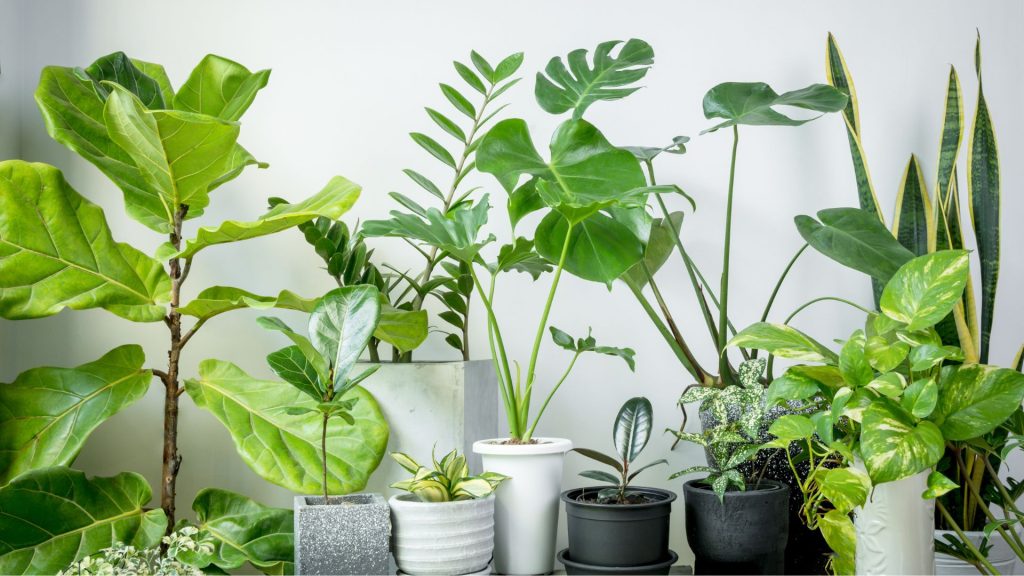Growing tropical plants indoors is on the rise with many people now opting for vibrant indoor gardens and rows upon rows of beautifully exotic tropical house plants. If your greenery is lacking pazazz and looking dull, adding indoor tropical houseplants to your collection can be just the thing you’re looking for to spice up your home decor.
It is easier than you may think to grow tropical plants indoors, with some of the most common tropical houseplants actually requiring less attention than other houseplants!
We’ve compiled a list of the 11 best indoor tropical plants to grow at home. Some have made this list because they are sure to brighten up any corner, whilst others are simply must-haves in the indoor tropical plant world.
Top 11 Best Tropical House Plants
1. Anthurium Andreanum
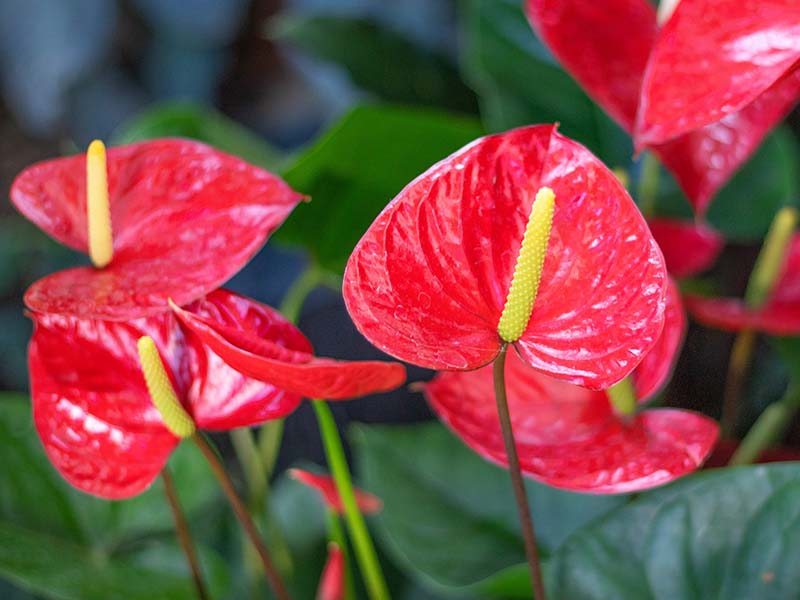
Anthurium Andreanums are beautiful tropical flowering house plants, with bright, rosy blooms often red in color. They prefer indirect sunlight and enjoy damp soil. So be sure to water regularly but not too often as the roots can’t tolerate too much water. Plant in loose potting soil to avoid pooling. These highly sort-after tropical houseplants may be more difficult for inexperienced gardeners.
2. Bromeliads

Bromeliads are a must-have for every indoor plant collection. They are by far the easiest tropical houseplant to grow as they are particularly robust and can handle little neglect. Their tolerance for lack of water makes them a great choice for newbie gardeners. Most bromeliads enjoy being watered once a week and love bright indirect sunlight.
3. Ficus Benjamina
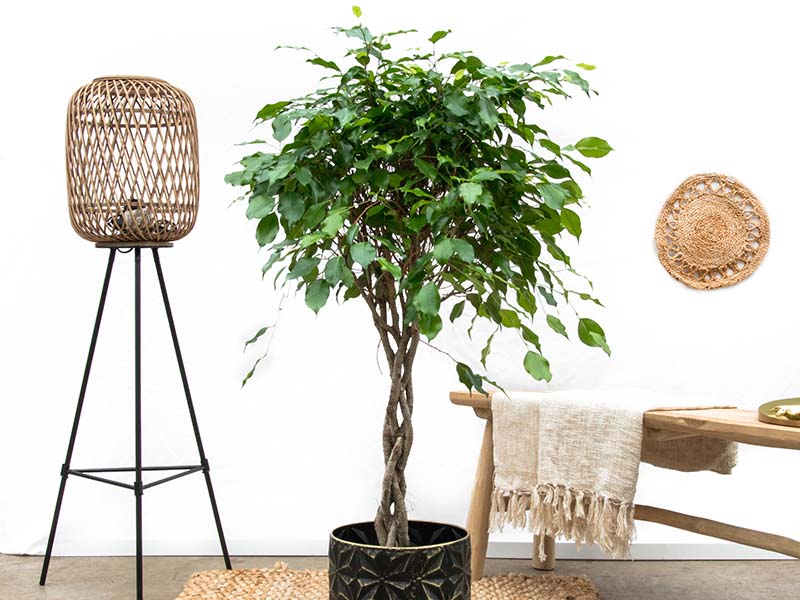
Ficus Benjamina is an ever-popular house plant with many people choosing to incorporate this dominant tropical indoor plant into their collection. Ficus are particularly susceptible to damage if moved frequently, so choose a great location and leave it there. Ficus may seem like a difficult plant to grow and care for, lucky for you we have a wonderful guide covering all your Ficus questions!
4. Peace Lilies
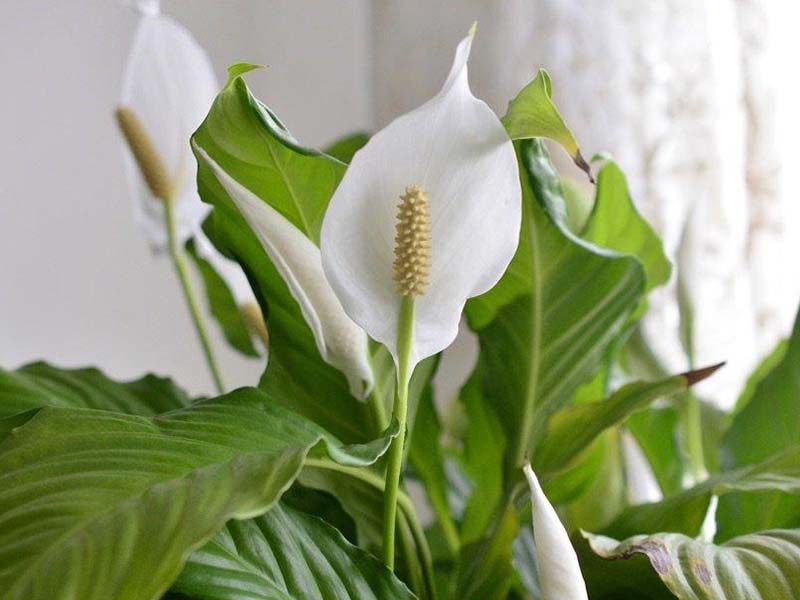
Peace Lilies are incredibly stunning tropical flowering plants, especially when in bloom. These gorgeous tropical plants are easy to grow and care for with most surviving well in medium light conditions and consistently moist soil. Their white flowers can add a modern contemporary feel to your interior and make wonderful window pieces.
5. Monstera
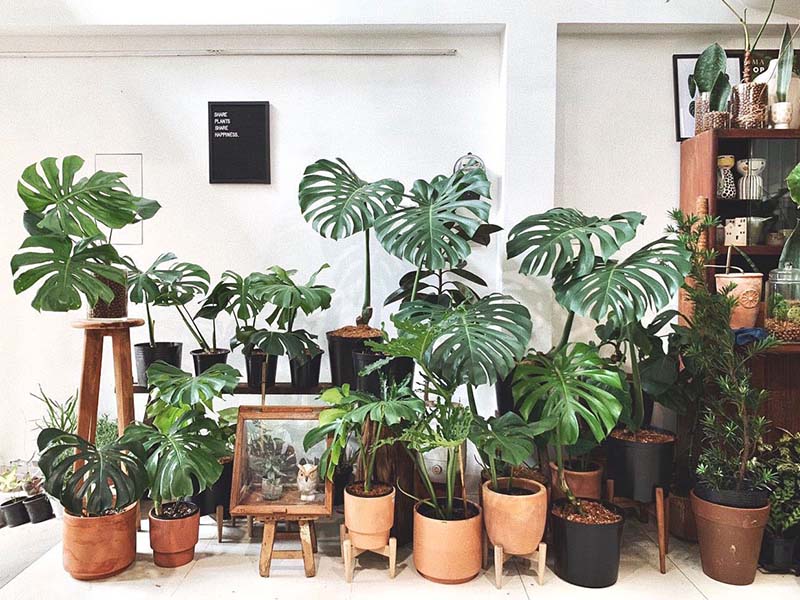
Monstera is a gnarly, wild-looking tropical plant with large flat leaves that spread out giving your home a jungle feel. Keep this tropical houseplant away from direct sunlight but be sure to place it somewhere with bright indirect light to give it the best chance of survival! Be careful not to overwater your Monstera by allowing the soil to dry out significantly between watering.
6. Philodendron
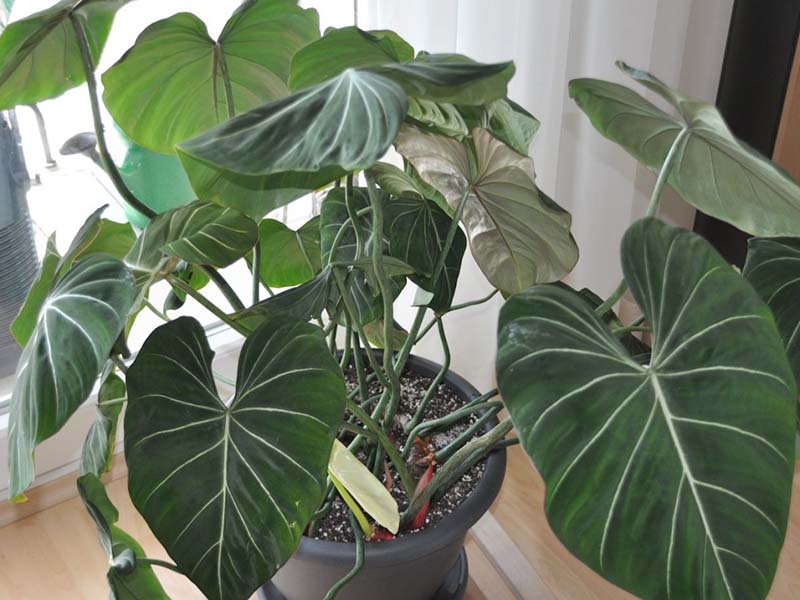
Philodendron is a popular genus of tropical houseplants known for their attractive, lush foliage and ease of care. There are many different species and cultivars of philodendrons, ranging in size from small, tabletop plants to large, hanging specimens. They prefer bright, indirect light but can also tolerate low light conditions. They prefer well-drained soil that is kept consistently moist, but not waterlogged. In general, philodendrons are very low maintenance and make excellent choices for beginner plant owners or those looking for a hardy, attractive indoor plant.
7. Calathea (Peacock Plant)
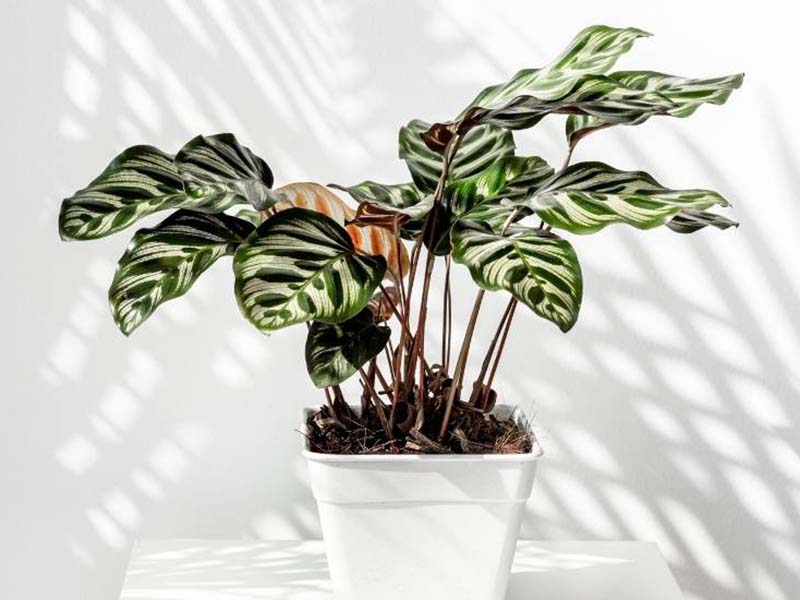
Calathea is a genus of tropical plants known for their beautiful, brightly colored leaves. They are native to South and Central America and thrive in warm, humid environments. Calathea plants are popular as houseplants due to their ornate leaves and ease of care. They prefer bright, indirect light and evenly moist soil. Over-watering can lead to root rot, so it’s important to allow the soil to dry out slightly between waterings. Calatheas also benefit from regular misting to increase humidity.
8. Stromanthe (Triostar)
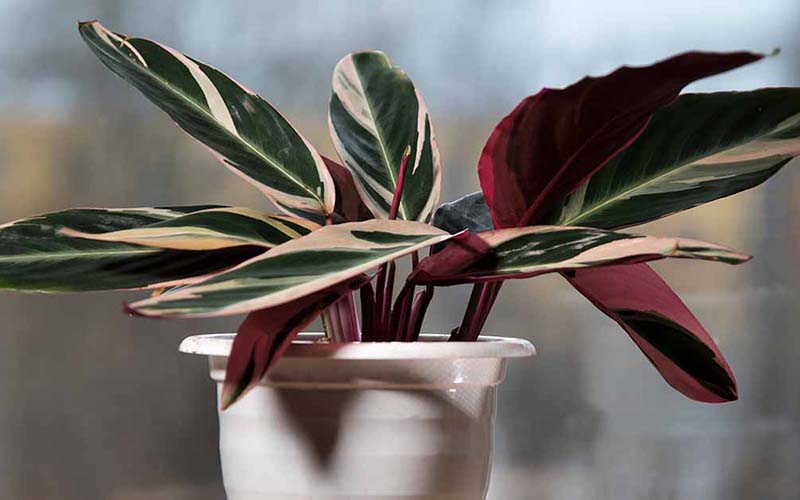
Stromanthe triostar, also known as Triostar, is a tropical plant native to South America. It is a popular houseplant known for its striking foliage, which is a combination of green, pink, red, and cream colors. Triostar plants prefer bright, indirect light and evenly moist soil.
It’s important not to let the soil dry out completely or become waterlogged, as this can lead to root rot. Triostars also benefit from regular misting to increase humidity, as well as occasional fertilizing to promote healthy growth. With proper care, Triostar can make a beautiful and low-maintenance addition to any indoor plant collection.
9. Alocasia (African Mask Plant)
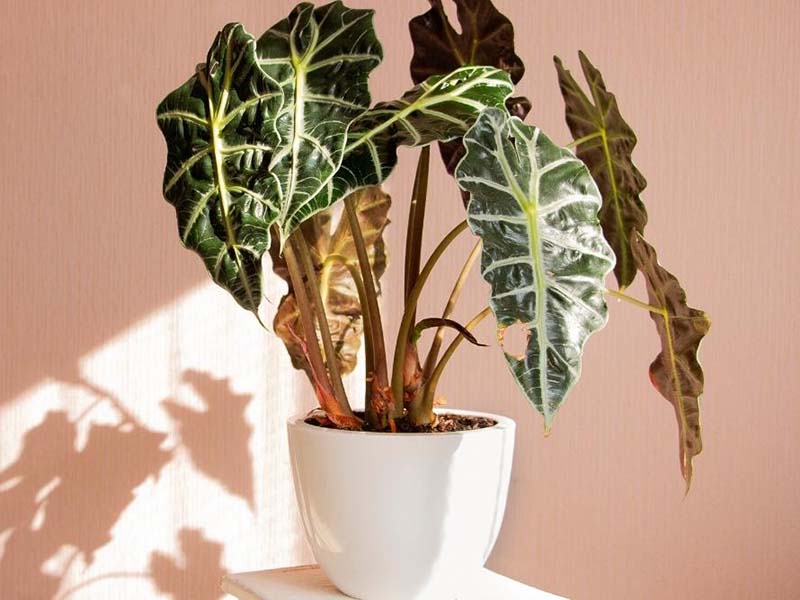
Alocasia, also known as African Mask Plant, is a genus of tropical plants native to Southeast Asia. They are known for their large, striking leaves that resemble elephant ears, and are popular as houseplants for their unique foliage. Alocasia plants prefer bright, indirect light and evenly moist soil. Over-watering can lead to root rot, so it’s important to allow the soil to dry out slightly between waterings.
They also benefit from regular misting to increase humidity and a high-quality, well-draining potting mix. Alocasia plants can be sensitive to changes in their environment, so it’s important to acclimate them gradually if you are moving them to a new location. With proper care, African Mask Plant can make a bold and exotic statement in any indoor garden.
10. Fiddle Leaf Fig (Ficus lyrata)
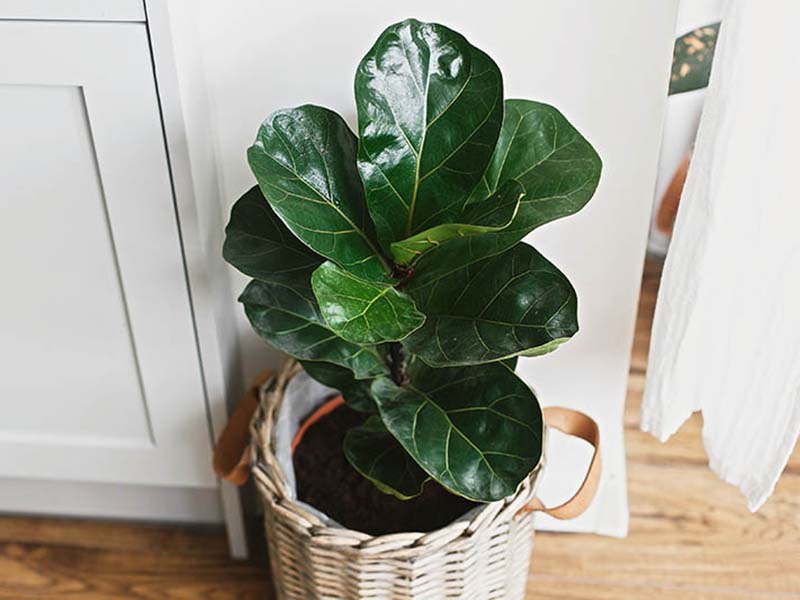
Fiddle Leaf Fig (Ficus lyrata) is a popular species of indoor plant native to West Africa. It is known for its large, violin-shaped leaves that can grow up to a foot in length. Fiddle Leaf Fig plants prefer bright, indirect light and evenly moist soil. Over-watering can lead to root rot, so it’s important to allow the soil to dry out slightly between waterings.
They also benefit from regular misting to increase humidity, as well as a well-draining potting mix. Fiddle Leaf Fig plants can be sensitive to changes in their environment, so it’s important to acclimate them gradually if you are moving them to a new location. With proper care, Ficus lyrata can make a striking focal point in any indoor space.
11. Pothos (Devil’s Ivy)
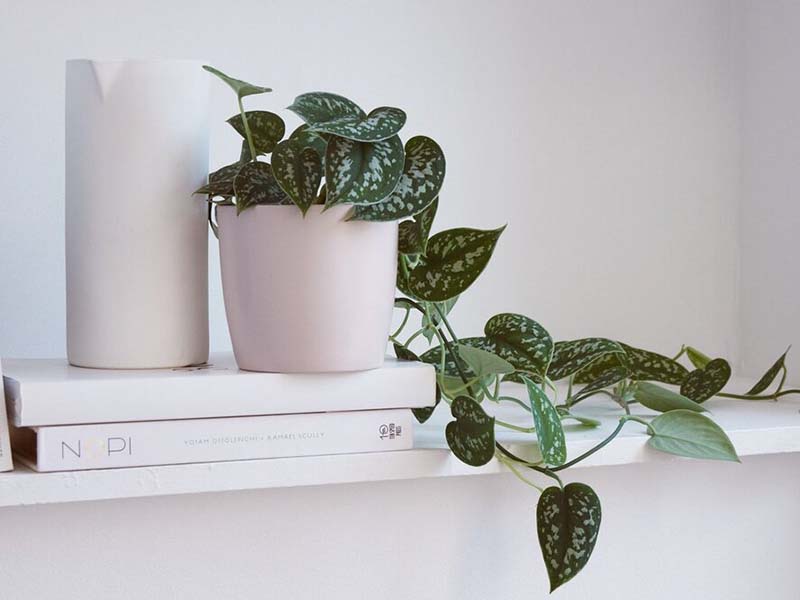
Pothos, also known as Devil’s Ivy, is a species of indoor plant native to the South Pacific. It is a popular houseplant due to its ease of care and attractive appearance. Pothos plants are known for their long, trailing vines covered in heart-shaped leaves that are variegated in shades of green, yellow, and white. They prefer bright, indirect light and evenly moist soil.
Over-watering can lead to root rot, so it’s important to allow the soil to dry out slightly between waterings. Pothos plants are also extremely adaptable and can tolerate a wide range of environmental conditions, making them a great choice for beginners. With proper care, Devil’s Ivy can thrive indoors for many years and make a beautiful addition to any indoor garden.
Summary
These 11 tropical indoor plant varieties are just begging to be added to your houseplant collection but if you do choose to purchase a tropical house plant, then make sure you understand the proper indoor tropical plant care for your specific breed.
Most common tropical houseplants can tolerate low-lighting conditions with most preferring medium indirect rays rather than being flooded with sunlight. Tropical house plants are extremely hardy plants and don’t require as much water as their non-tropical friends. So always check the soil is dry before watering your tropical house plant so you don’t drown it!
Caring for tropical houseplants is actually very simple, so be sure to research your specific indoor tropical plant variety to ensure you are providing the ultimate care for a summer feel in your home year-round.


